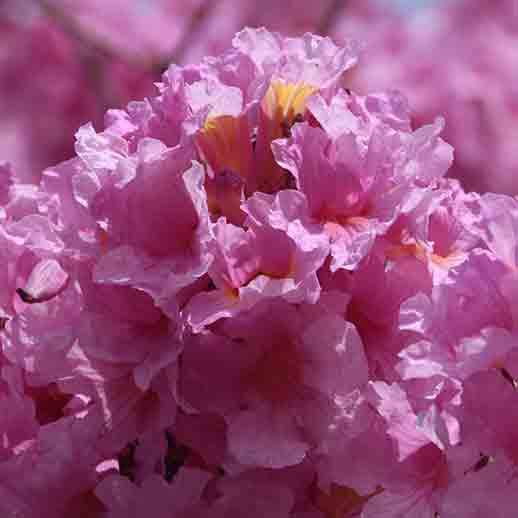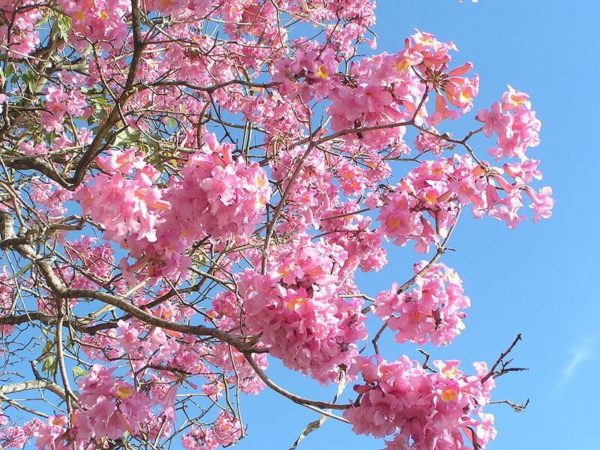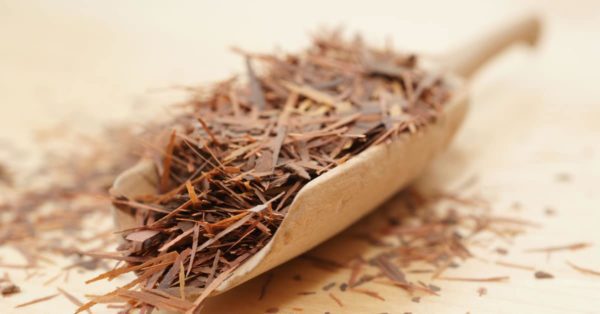
by Claire Patterson Valente
A few days ago Neu and I went out on one of our frequent visits to the forest that borders Prainha, it is such a tranquil place and at dawn or dusk the chorus of bird song is truly wonderful to experience. We were on the hunt for wild cashew fruits which are in season now but the main reason for our visit was to see some special trees.
At this time of year there is one tree that shouts out its presence and if you are on a high point, looking down on the forest which stretches green to the horizon, pools of purple or pink blossom stand proud of the canopy: the Pau D’ Arco tree.
Off the main pathways, the forest is not the easiest of places to walk through, mostly low level scrub trees, many with thorns, dripping with vines, with the remains of fallen branches and sharp spikes from dead saplings sticking up through the leaf litter, it is easy to get entangled, stabbed or poked in the eye, but to get close to the tree, we had to go in. I would be reluctant to do this without Neu, simply because it is so very easy to get completely lost when you can’t see more than a few feet in front of you and if I’m going to get lost I’d rather it be with him.
We slid down a sand dune and into the forest, it’s like entering another world, so quite and with a very strong feeling that we are being watched. From high up on the dune the tree we were aiming for was only a few feet away from where we had entered the forest but getting to the tree involved taking a twisted route, often having to double back a bit where the undergrowth was un-passable, it took a while but we got there.
The Pau D’Arco tree is sometimes known in Brazil as “The Divine Tree” and as we stood looking up through the twisted canopy, the bright pink of the flowers in perfect harmony with the bright blue of the clear sky beyond, I could fully appreciate why. Lovely as it was, the proximity of the other trees made it impossible to photograph anything other than the canopy or the rather thin trunk, so we set off in search of another, finding it simpler to climb back up the dune and out of the forest, then go along around it until we spotted some more, this time on the edge of a clearing near a lagoon and much simpler to reach.
Lovely as it was, the proximity of the other trees made it impossible to photograph anything other than the canopy or the rather thin trunk, so we set off in search of another, finding it simpler to climb back up the dune and out of the forest, then go along around it until we spotted some more, this time on the edge of a clearing near a lagoon and much simpler to reach.
Family: Bignoniaceae.
Genus: Tabebuia.
Species: impetiginosa
Synonyms: Tabebuia avellanedeae, Tabebuia serratifolia, Tabebuia impetiginosa amongst others.
Pau D’Arco is found all over South America and into Mexico. Depending on the colour of the flowers, it is also known as Ipé roxa (purple), Ipé rosa (pink), Ipé amarelho (yellow) amongst many other names, here Pau D’Arco is pronounced as Podarco. It is a tall growing tree which (in this area) loses all it’s leaves before producing this dramatic display of flower clusters, putting out new leaves just before these flowers fall. In other areas, depending on the climatic conditions, the tree is evergreen.
It has many commercial uses, the timber being very durable and of a high quality, reminiscent of oak, making it valuable for all types of construction. The name Pau D’Arco (bow wood) comes from it being used to make hunting bows and those for musical instruments. Neu tells me it is often used in the construction of jangadas because it can tolerate being submerged in water for long periods of time without deteriorating. The bark and inner wood have been used for thousands of years in traditional medicine (my father in law uses the bark to make a tea for treating inflamed and sore muscles.) and it is credited with a wide range of actions including, anti-bacterial, anti-inflammatory, anti-coagulant, anti-arthritic, anti-rheumatic, fever reducing and tonic giving.
The bark and inner wood have been used for thousands of years in traditional medicine (my father in law uses the bark to make a tea for treating inflamed and sore muscles.) and it is credited with a wide range of actions including, anti-bacterial, anti-inflammatory, anti-coagulant, anti-arthritic, anti-rheumatic, fever reducing and tonic giving.
There are certain trees that have an emotional effect on us, be it for their age, size, beauty, smell, significance in our lives, spiritual meaning or a combination of all these things and more, Pau D’Arco is one such tree for me and I very much appreciate being able to see them in all their glory, in a natural setting. Thankfully, as Prainha is an Extractive Reserve those trees should be there for future generations to enjoy. For more information on this tree, it’s medicinal uses and scientific research into it and many other tropical plants, I would recommend the Rain~tree site (see link below). The Rain~tree site is a labour of love and a fantastic resource for anyone interested in any aspect of the Amazon Rainforest, including a packed section for schools, teachers and students. Rain~tree also offer a plant data base for those wishing to learn more about traditional rainforest medicines or individual rainforest plants (including some plants which, like the Pau D’Arco, are found outside of the rainforest). Visit the Rain-Tree website.
For more information on this tree, it’s medicinal uses and scientific research into it and many other tropical plants, I would recommend the Rain~tree site (see link below). The Rain~tree site is a labour of love and a fantastic resource for anyone interested in any aspect of the Amazon Rainforest, including a packed section for schools, teachers and students. Rain~tree also offer a plant data base for those wishing to learn more about traditional rainforest medicines or individual rainforest plants (including some plants which, like the Pau D’Arco, are found outside of the rainforest). Visit the Rain-Tree website.